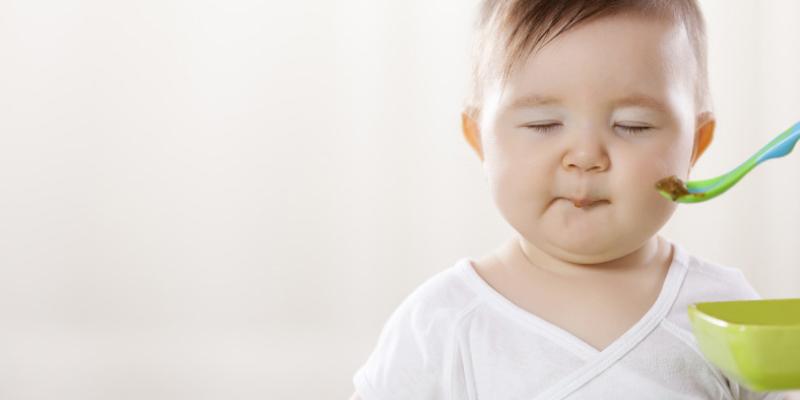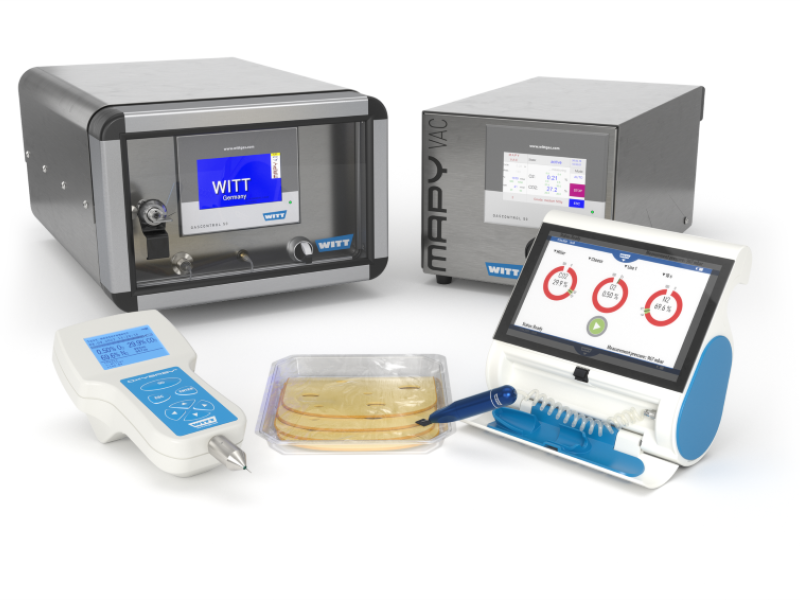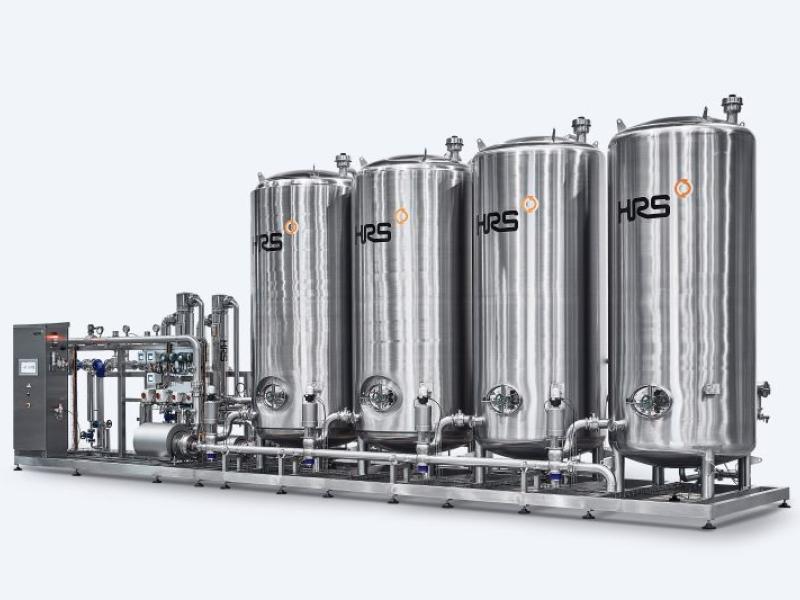Baby food is one of the most tightly controlled food items. There are many different paths through which pollutants can find their way into baby food. That is why manufacturers have installed a control chain running through all the stages and levels of production, starting at the farmer with the control of feed, fertiliser and seed, through the analysis of raw materials such as milk, grains or vegetables, and on to control of the end product.
What kinds of pollutant are covered by the chemical analyses?
Babies and infants are among the most sensitive consumer groups, since their body weight is low and their nutrition often does not have the variety consumed by older children and adults. Special demands are therefore placed on the safety of baby food. Safety limits for potential pollutants in baby food are therefore often lower than for other foods.
To be able to meet these strict demands, raw materials from a specific, controlled production facility are usually used for baby food. The use of pesticides on fruit, vegetables and grains is largely avoided. Meat is obtained from animals which, if at all possible, have been reared without the use of veterinary medicines.
All the raw materials are thoroughly analysed before they are used. Special emphasis is put on tests for environmental contaminants such as heavy metals or dioxins. Analyses are also made for pesticide and veterinary medicine residues.
Particularly tight hygienic standards are followed when processing the food. Tests are carried out regularly to exclude the possible presence of potentially harmful microorganisms, and also to avoid the inclusion of disinfectants or substances such as softeners or lubricants that might be transferred to the food from production equipment.
The packages that are used for baby food and other foodstuffs are checked for any possible material migration before being used. The packaging may only be used if these strict, statutory limits are observed.
Another set of tests is finally carried out on the fully manufactured, packed baby food. For example, additional analyses are carried out for softeners and mineral oil hydrocarbons that could originate from production equipment or from packaging.
The evaluation criteria of a range of tests (e.g. the German ‘Ökotest’ (eco-test) and the Stiftung Warentest) pay attention to PVC/PVDC chlorinated compounds in lid seals, and their presence is deprecated. Consumers, parents in particular, also increasingly react badly to pollutants in packaging. These materials sometimes contain substances that can migrate to the packed food and thus find their way into the organism. Article three of the regulation (EC) no. 1935/2004 of the European Parliament and of the Council on materials and articles intended to come into contact with food does specify that these “must be sufficiently inert to preclude substances from being transferred to food in quantities large enough to endanger human health or to bring about an unacceptable change in the composition of the food or a deterioration in its organoleptic properties.” Nevertheless, the process that we know as migration frequently does take place.
What substances are involved, and which of these are considered – or could be considered – concerning?
In point of fact, an exchange of material is always unavoidable whenever two materials – the packaging material and the food in this case – come into contact. Substance migration is therefore always present whenever food is contained in packaging or comes into contact with objects such as crockery or cooking utensils. So there are substances in practically all packaging materials that can migrate to food. Whether the material concerned is a ‘pollutant’ usually depends on the quantity of this substance that a human being absorbs. The law respects this natural circumstance in that what it requires is that the substance that migrates from packaging is restricted to quantities that are not hazardous to health, that do not unacceptably change the composition of the food and that do not disadvantageously change the appearance, taste or odour of the food. Good manufacturing practice must, moreover, be applied to food packaging both by the manufacturer of the packaging as well as by whoever fills the packaging with food, in order to limit any possible migration of substances out of the packaging to the minimum degree that is technically possible. Manufacturers are thus legally obliged to adapt their processes continuously to the latest technical developments.
For the sake of health and its protection, the statutory requirements for packaging lay down strict limits for substances in packaging which, due to their properties, must only be consumed through food in limited quantities. This applies, for example, to many heavy metals, and to a large number of substances that are necessary for the manufacture of plastics. This includes certain softeners along with vinyl chloride, which is the raw material for PVC. Packaging materials must be regularly examined to see that they are keeping to these limits.
The legislative authorities are constantly editing and supplementing the list of threshold values on the basis of new scientific discoveries. The statutory regulations for plastics that are intended to come into contact with food have a list of about 900 substances that may be used for the manufacture of these plastics. There is what is known as a specific migration limit for the great majority of these substances. This is a threshold value that must not be exceeded after substance migration into food. At present there are various classes of substances that are found in packaging materials and for which an adequate scientific basis for the specification of reasonable statutory threshold values is not yet available. This includes mineral oil hydrocarbons (MOSH/MOAH) as well as certain hormone-mimicking substances. Safe limits must be maintained for these substances in the light of the latest generally recognised science.
It is said that a packed food can only be as good as the packaging that holds it. Potential contamination that conflicts with the many advantages of plastics – such as good protection against germs and bacteria, or an airtight seal against the surroundings – can, however, be countered through the correct choice of packaging.
Which packaging materials don’t contain any contaminants, and give consumers the reassurance that they are giving their children truly healthy food?
No packaging that is intended to be used in contact with baby food and other foodstuffs may release materials into the food in quantities that could endanger the health of consumers. This rule applies, regardless of the material from which the packaging is made.
Glass packaging with P/T closures is particularly suitable for pasteurized or sterilised baby food, since the food is protected from microbial spoilage and oxidation, and can be kept unrefrigerated for long periods without losing its valuable properties. Glass packaging is also noted for its particularly low substance migration to food, and can be very effectively recycled, as can the metal closures. The packaging waste is therefore not harmful to the environment.
Anyone who wishes to avoid PVC in baby food packaging can make use of packages that are fitted with a modern, metal closure using a PVC-free sealing compound. This kind of closure is not only free from PVC – it also does not include any softener in the sealing compound. As a consumer, we can often recognize these closures from a corresponding advertising print on the outside of the closure or on the label.
It is not usually possible to tell immediately whether a food, or a baby food, is packaged without PVC, since there is no obligatory labelling system. In some cases metal-vacuum closures or P/T closures can be recognised after opening from a different colour of the sealing ring. It may, for example, be blue, but this is not obligatory.
Do you believe that more such information should be given on the lid or the glass?
It is the job of the food company (the manufacturer of foods and packaging), of the legislative authorities and of the supervisory authorities to create, and indeed to maintain, suitable legal regulations, so that consumers are adequately protected from health hazards and from harmful effects from food caused by substance migrations. In the EU, and most particularly in Germany, we have an effectively functioning system of consumer protection, on which every consumer can rely. Of course, in this field as in every other, there are needs and possibilities for improvement on which everybody involved is constantly working.
Voluntary identification could nevertheless be helpful in order to permit consumers a choice between PVC-based and PVC-free glass closures.






